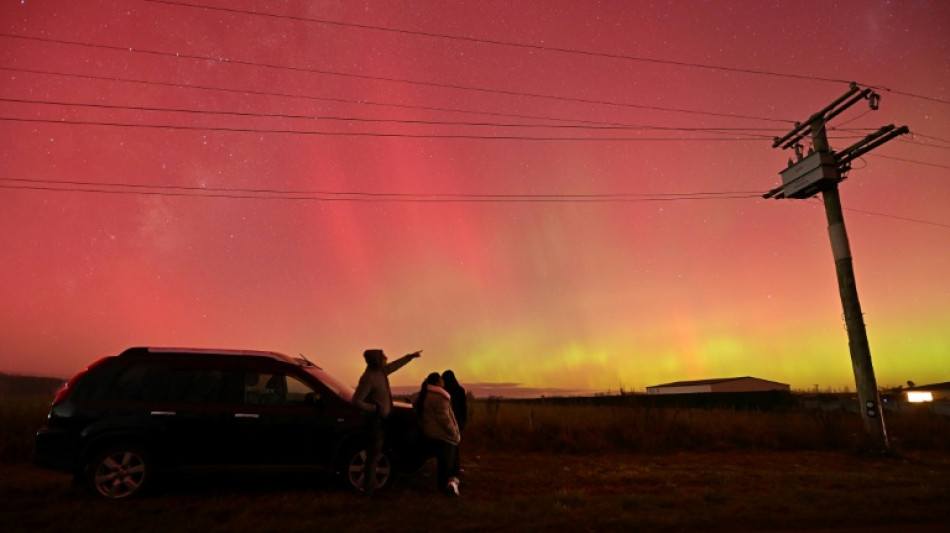
-
 Thousands protest Mexican judicial reform
Thousands protest Mexican judicial reform
-
Nissanka leaves Sri Lanka in sight of third Test win over England

-
 Kendrick Lamar to headline 2025 Super Bowl halftime show
Kendrick Lamar to headline 2025 Super Bowl halftime show
-
Thousands defy roadblocks in rally for Pakistan ex-PM Khan

-
 Roglic wins record-equalling fourth Vuelta
Roglic wins record-equalling fourth Vuelta
-
Russia advances in east Ukraine, launches deadly air strikes

-
 Cowboys quarterback Prescott agrees record $240 mln extension
Cowboys quarterback Prescott agrees record $240 mln extension
-
Swiss double in Paralympic wheelchair marathons, Dutch women retain basketball title

-
 New 'Beetlejuice' creeps its way to top of N.America box office
New 'Beetlejuice' creeps its way to top of N.America box office
-
South Africa captain Kolisi leaves Racing 92: French Top 14 club

-
 Funeral for slain athlete Cheptegei in Uganda on Sept 14
Funeral for slain athlete Cheptegei in Uganda on Sept 14
-
Dolphins star Hill arrested on way to season-opener

-
 Smith hits back after England collapse against Sri Lanka
Smith hits back after England collapse against Sri Lanka
-
Weather delays final regattas in Louis Vuitton Cup

-
 Venezuela's Gonzalez Urrutia: from placeholder to opposition pointman
Venezuela's Gonzalez Urrutia: from placeholder to opposition pointman
-
Marquez thanks rain for San Marino MotoGP win as leader Martin pays for gamble

-
 Boeing, union reach preliminary deal to avert Seattle-area strike
Boeing, union reach preliminary deal to avert Seattle-area strike
-
Neuville wins Acropolis Rally to close in on world title

-
 Venezuela's opposition figure fled to Spain to save 'his life'
Venezuela's opposition figure fled to Spain to save 'his life'
-
Trump, Harris tied on eve of televised presidential debate

-
 Paris Paralympics the greatest ever, say former Olympics executives
Paris Paralympics the greatest ever, say former Olympics executives
-
Pope exit revives Sri Lanka's hopes in third Test against England

-
 Gunman kills 3 Israelis at West Bank crossing as Gaza war rages
Gunman kills 3 Israelis at West Bank crossing as Gaza war rages
-
Marquez wins San Marino MotoGP as leader Martin pays for rain gamble

-
 Greece to hike fee for cruise passengers to Mykonos and Santorini
Greece to hike fee for cruise passengers to Mykonos and Santorini
-
Carsley's 'refreshing' England overhaul launches new era

-
 Swiss double in wheelchair marathons on final day of Paralympics
Swiss double in wheelchair marathons on final day of Paralympics
-
France's Le Pen urges Macron to hold referendum to break deadlock

-
 Typhoon Yagi weakens, toll rises to 14 in Vietnam
Typhoon Yagi weakens, toll rises to 14 in Vietnam
-
India's Randhir Singh elected Asian Olympic chief

-
 Under pressure, UN winds down 'unique' Iraq probe into IS crimes
Under pressure, UN winds down 'unique' Iraq probe into IS crimes
-
'Proud' athletics great Weir calls time on marathon Paralympic career

-
 'Brave' Afghanistan can beat anyone, says skipper ahead of NZ Test
'Brave' Afghanistan can beat anyone, says skipper ahead of NZ Test
-
Vaughan warns England against 'taking the mick' after Sri Lanka collapse

-
 England's Moeen Ali retires from international cricket
England's Moeen Ali retires from international cricket
-
Japan's Hirata holds off inspired Smyth to win on Asian Tour

-
 China's Paralympic domination fails to ignite enthusiasm back home
China's Paralympic domination fails to ignite enthusiasm back home
-
Sporting a feathered headdress, Pope finds 'Eden' in Papua New Guinea

-
 Super Typhoon Yagi toll rises to 9 in Vietnam after landslide
Super Typhoon Yagi toll rises to 9 in Vietnam after landslide
-
Indonesian villagers dress corpses in ritual for the dead

-
 Williamson expects 'phenomenal' Root to keep breaking records
Williamson expects 'phenomenal' Root to keep breaking records
-
The end of Olympic escapism for gloomy France

-
 Amy Adams gets real about motherhood in 'Nightbitch'
Amy Adams gets real about motherhood in 'Nightbitch'
-
Venezuela says presidential opposition candidate has left country

-
 Women ride Pakistan's economic crisis into the workplace
Women ride Pakistan's economic crisis into the workplace
-
Wallabies 'fell of cliff' in loss to Pumas, says coach Schmidt

-
 Child abuse scandals hang over pope's East Timor visit
Child abuse scandals hang over pope's East Timor visit
-
Biden team, end in sight, keeps hope on Gaza truce despite setbacks

-
 Sabalenka dedicates US Open to family 'who never gave up' on dream
Sabalenka dedicates US Open to family 'who never gave up' on dream
-
Venezuela takes diplomatic jab at Brazil in spat over election


Solar storms could cause more auroras on Tuesday night
Massive explosions on the Sun have triggered warnings of geomagnetic storms that could create dazzling auroras in the northern United States, Europe and southern Australia on Tuesday night.
In May, the most powerful geomagnetic storm to strike Earth in more than two decades lit up night skies with colourful light displays in Hawaii, Spain, South Africa and other places far from the extreme latitudes where they are normally seen.
These storms are caused by coronal mass ejections (CMEs) -- expulsions of plasma and magnetic fields from the Sun which take days to reach Earth.
At least four CMEs that erupted in recent days are headed towards Earth, the US-based National Oceanic and Atmospheric Administration (NOAA) said late Monday.
They will arrive from Tuesday to Thursday, with "geomagnetic storm watches" declared by the NOAA on those days.
But "the brunt of the activity is most likely" to come on Tuesday, when there is a "strong" geomagnetic storm warning of G3, the NOAA said.
May's record storms were classified as the most extreme level of G5. This means any potential auroras this week are unlikely to stray as far, or as be as powerful, as those seen earlier this year.
But if the current forecast is correct, during the late evening hours in the US on Tuesday, an "aurora could become visible as far south as the northeast US through the upper Midwest and across the rest of the northern states to include northern Oregon", the NOAA said.
"With a bit of luck," aurora borealis -- also known as the northern lights -- could also be seen in areas such as England, northern Germany, the Netherlands and Belgium, according to the website SpaceWeatherLive.
Australia's Bureau of Meteorology said that a sequence of CMEs arriving in the next few days mean that aurora australis might be visible in some areas.
- 'Cannibal CME' -
When CMEs erupt, they shoot around a billion tons of plasma -- with an accompanying magnetic field -- from the Sun towards our home planet.
One of the CMEs coming towards Earth this week merged with another, forming what is called a "Cannibal CME", according to spaceweather.com.
The NOAA warned that more CMEs are continuing to erupt, so more could be coming our way.
When the CMEs slam into Earth's magnetosphere, they can create geomagnetic storms.
These storms can mess with satellites orbiting Earth and affect things like radio signals and GPS positioning systems.
They can also knock out electricity grids -- the "Halloween Storms" of October 2003 sparked blackouts in Sweden and damaged power infrastructure in South Africa.
Astronauts on the International Space Station often shelter during extreme solar activity to avoid being exposed to radiation.
Numerous strong solar flares -- huge explosions on the Sun's surface which can cause CMEs -- have also been emitted in recent days.
Most CMEs and flares come from sunspots, which are massive, darker areas of intense activity on the solar surface. The sunspot cluster that caused May's storms was 17 times the size of Earth.
More geomagnetic storms could be yet to come, because solar activity is only just approaching the peak of its roughly 11-year cycle.
The peak -- called "solar maximum" -- is expected between late 2024 and early 2026.
A.Magalhes--PC




